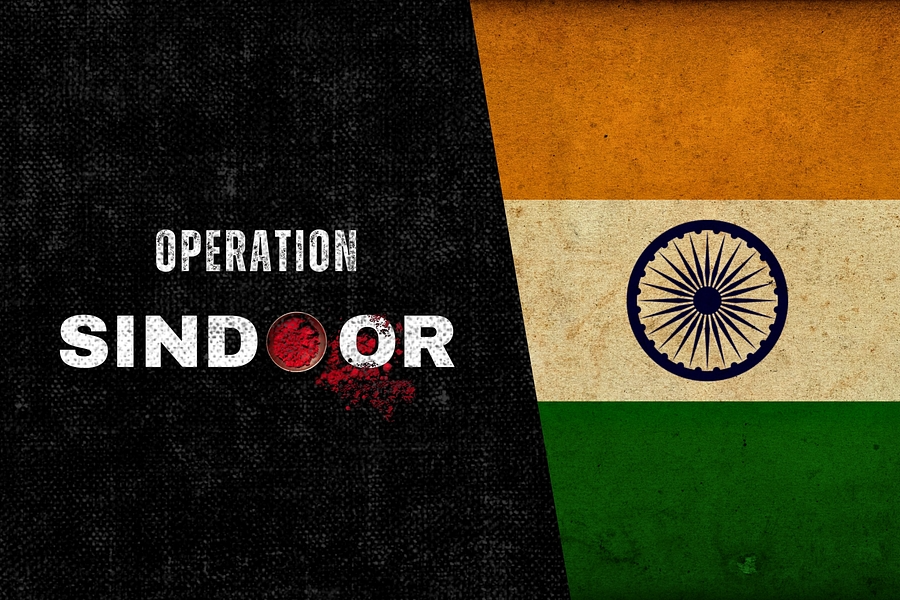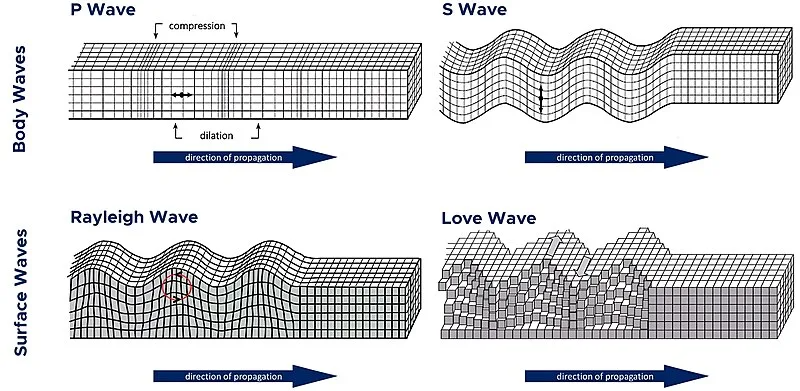July 26th Current Affairs
Table of Contents
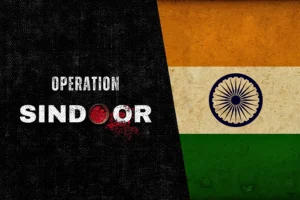
Operation Sindoor
July 21st Current Affairs Home / Operation Sindoor Why in News? Parliament’s Monsoon Session, starting July 21, 2025, is expected to feature
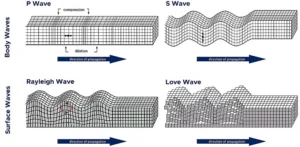
Alaska Earthquakes
July 21st Current Affairs Home / Alaska Earthquakes Why in News? On July 21, 2025, Alaska Peninsula was struck by

August 2, 2027 Solar Eclipse
July 21st Current Affairs Home / August 2, 2027 Solar Eclipse Why in News? A total solar eclipse is set

India’s milestone in clean energy transition
July 21st Current Affairs Home / India’s milestone in clean energy transition Why in News? India achieved a milestone by

‘Baby Grok’, child-friendly AI app
July 21st Current Affairs Home / ‘Baby Grok’, Child-friendly AI app Why in News? Elon Musk’s AI company xAI has announced
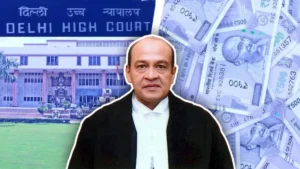
Impeachment proceedings against Justice Yashwant Verma
July 22nd Current Affairs Home / Impeachment proceedings against Justice Yashwant Verma Context On July 22, 2025, impeachment proceedings against
Commemorating Rajendra Chola I: Cultural Legacy and Historical Reverberations
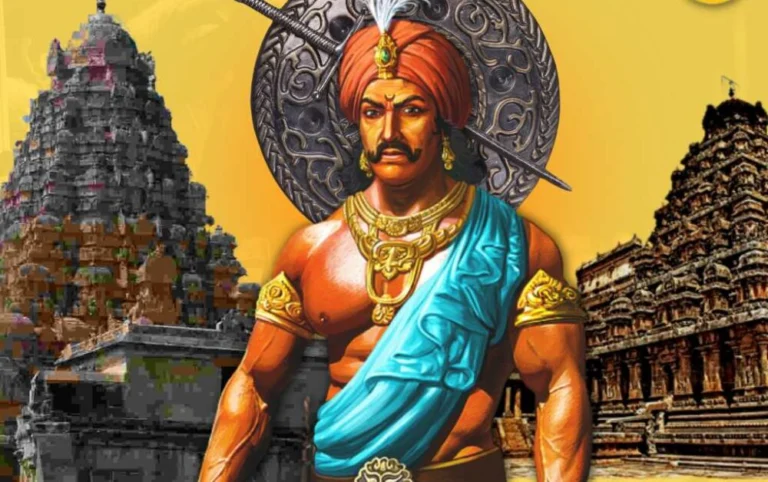
Context
In July 2025, the legacy of Chola emperor Rajendra I has been brought back into national discourse. A commemorative event marking 1,000 years since his northern and maritime expeditions is being held at Gangaikonda Cholapuram, the ancient Chola capital. The event includes the unveiling of a coin, an exhibition, and the restoration of historical water structures, celebrating one of India’s most successful maritime rulers.
Historical Background
Rajendra Chola I (r. 1014–1044 CE), son of Rajaraja I, presided over the golden age of the Chola Empire. While his father consolidated southern conquests, Rajendra led campaigns north to the Gangetic plains and east to Southeast Asia, achieving unprecedented naval dominance over the Malacca Strait and establishing trade supremacy across Suvarnadwipa (modern-day Indonesia, Malaysia, and Thailand).
He commemorated his Gangetic campaign by building a new capital, Gangaikonda Cholapuram, and constructing a vast water reservoir named Cholagangam, filled with Ganges water brought by his returning army.
Cultural and Maritime Legacy
The Cholas are renowned for temple architecture, bronze sculpture, inscriptional records, and maritime trade. Rajendra’s reign expanded Tamil commercial influence across Asia through merchant guilds like Manigramam and Ayyavole, whose records are found in Java, Sumatra, and Cambodia.
Importantly, these were not religious wars. Epigraphs and contemporary accounts highlight that these campaigns were pragmatic and centered around economic control and trade diplomacy rather than religious expansion.
Key Cultural Concepts and Terms
- Suvarnadwipa: A Sanskrit term meaning “Golden Island”, used to describe Southeast Asian lands.
- Gangaikonda Cholapuram: Meaning “The city of the Chola who conquered the Ganga”, this was the imperial capital built by Rajendra I.
- Cholagangam Tank: A massive man-made reservoir commemorating the Ganges expedition, a hydrological and cultural marvel.
Significance of Restoration
The revival of Cholagangam Tank, with its historic sluices and sediment traps, is not just a symbolic gesture—it reaffirms ancient ecological engineering. Restoration plans include bund strengthening, canal desilting, and the development of heritage tourism. This echoes Rajendra’s original vision—imperial power rooted in both land and water.
Impact on Federal Cultural Memory
The centenary offers an opportunity to integrate regional histories like the Cholas into the broader Indian civilisational narrative. The focus on Chola maritime prowess brings attention to India’s pre-colonial trade links with Asia, often ignored in mainstream history. Celebrating such figures fosters cultural unity while respecting local identities.
Way Forward
- Curriculum Integration: Greater inclusion of Chola maritime and engineering achievements in school syllabi.
- Heritage Tourism: Promoting Gangaikonda Cholapuram as a UNESCO heritage site.
- Ecological Revival: Using ancient water systems as models for modern water conservation.
- Digital Archives: Digitisation and interpretation of Chola copper plates, inscriptions, and epigraphs.
Prelims MCQ
Q. Consider the following statements regarding Rajendra Chola I:
- He established diplomatic and trade dominance in Southeast Asia through naval expeditions.
- The Cholagangam Tank at Gangaikonda Cholapuram was filled using water from the Yamuna River.
Which of the statements given above is/are correct?
(a) 1 only
(b) 2 only
(c) Both 1 and 2
(d) Neither 1 nor 2
Answer: (a) 1 only
Explanation:
Rajendra Chola I is celebrated for his naval expedition in 1025 CE against the Srivijaya Empire, which included modern-day regions of Malaysia, Sumatra, and Thailand. His campaign asserted Tamil trade supremacy over the vital Malacca Strait, a major commercial route. His ships reached as far as Suvarnadwipa, projecting India’s maritime strength and establishing enduring cultural and trade links.
The first statement is correct as his expeditions were designed for strategic signalling, trade dominance, and imperial prestige rather than religious motives.
The second statement is incorrect. The Cholagangam Tank was filled with sacred water from the Ganga River, not the Yamuna. The water was ceremonially carried back by Rajendra’s army after his victorious northern campaign. This act was symbolic of the Chola emperor’s conquest over the northern lands and a way to legitimise his sovereignty across the subcontinent.
The tank itself was a marvel of hydraulic engineering, including sluices, vortex silt ejectors, and laterite stone embankments, irrigating nearly 1,500 acres at its peak. Its design reflected the Chola emphasis on blending engineering prowess with ritual significance.
Mains Question
Q. Rajendra Chola I’s maritime and inland campaigns reflect a model of strategic, cultural, and ecological governance. Critically analyse how ancient Indian empires used water systems and trade diplomacy to assert imperial legitimacy. (Answer in 250 words)
India’s Adoption Imbalance – A Crisis of Access and Accountability
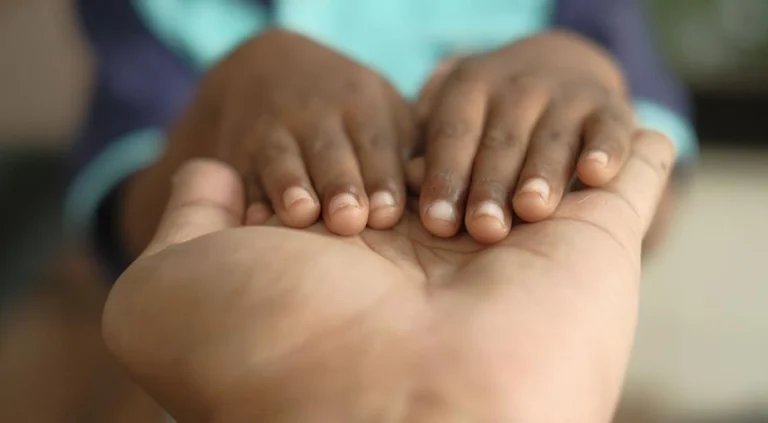
Context
In mid-2025, data obtained via RTI revealed a disturbing trend: for every child declared legally free for adoption in India, 13 prospective parents are waiting. The average wait time has climbed to 3.5 years, highlighting deep-rooted inefficiencies in India’s child adoption ecosystem. This is despite India having an estimated 3.1 crore orphans (INSAMER 2020) and over 22,000 children in Child Care Institutions (CCIs).
Background
The Central Adoption Resource Authority (CARA), under the Ministry of Women and Child Development, regulates both domestic and inter-country adoptions. Though interest in adoption has surged — owing not just to infertility but changing societal attitudes — the pool of children legally available for adoption remains alarmingly low.
In 2021, 2,430 children were available for 26,734 registered parents (ratio: 1:11); by 2025, this gap has widened to 2,652 children for 36,381 parents (1:13). This widening mismatch has led to systemic stress and growing calls for reform.
Constitutional Provisions
- Article 15(3): Allows the State to make special provisions for children.
- Article 39(e) & (f) (Directive Principles): Mandates State to ensure that children are not abused and are given facilities to develop in a healthy manner.
Legal Framework
- Juvenile Justice (Care and Protection of Children) Act, 2015 (amended 2021): Governs adoption and lays down a time-bound process for declaring a child legally free for adoption.
- CARA Guidelines (2022): Mandate digital transparency and prioritisation of special needs and older children.
- Hague Convention on Inter-country Adoption (India ratified in 2003): Ensures ethical, transparent adoptions and protects the child’s best interests.
Reasons for the Gap
- Bureaucratic delays: Poor implementation of JJ Act timelines.
- Paper guardianship: Children have guardians who exist only on paper, hindering legal clearance.
- Resource Constraints: CCIs lack trained staff for adoption-related evaluations.
- Cultural hesitancy: Parents often prefer children aged 0–2, making older or special needs children less likely to be adopted.
- Poor interlinkages: Weak coordination between CCIs, District Child Protection Units, and adoption agencies.
Significance
The delay in making children legally free for adoption not only reduces their chances of finding a family but also raises psychological, emotional, and developmental concerns. Long institutionalisation increases trauma, delays social adjustment, and infringes on their Right to Family and dignity.
Technical Terms Defined
- Legally Free for Adoption: A child is considered so only after due process, including parental surrender or legal abandonment and declaration by the Child Welfare Committee (CWC).
- CCI (Child Care Institution): Residential institutions meant for the care and protection of children in need.
Impact on Society
- Children: Increased institutionalisation leads to emotional and cognitive underdevelopment.
- Parents: Frustration with the process can push some towards illegal adoptions or abandoning the idea altogether.
- Adoption Ecosystem: Trust in public systems weakens, reducing transparency and promoting unsafe practices.
Inter-country Adoption
Though regulated by CARA and the Hague Convention, the focus remains on domestic adoption. International adoptions are declining due to increased scrutiny, stricter regulations, and India’s emphasis on giving preference to Indian families first.
Way Forward
- Strict JJ Act enforcement with real-time audits and accountability for delay.
- Strengthen CCIs: Train personnel in legal and psychosocial evaluation.
- Revamp CARA Portal: Add transparency, match alerts, and grievance redressal.
- Community Campaigns: Destigmatise older child and special needs adoption.
- Child-centric Focus: Prioritise child welfare over legal technicalities.
Prelims MCQ
Q. Consider the following statements regarding child adoption in India:
- Only children declared legally free for adoption by the Child Welfare Committee (CWC) can enter the CARA database.
- The Juvenile Justice Act mandates that all children in CCIs must be declared legally free for adoption within one year.
- India gives preference to inter-country adoptions over domestic adoptions under CARA regulations.
Which of the statements given above is/are correct?
(a) 1 only
(b) 1 and 2 only
(c) 2 and 3 only
(d) 1, 2, and 3
Answer: (a) 1 only
Explanation:
Statement 1 is correct: Only children who have been declared legally free for adoption — after evaluation by the Child Welfare Committee (CWC) — can be entered into the CARA database for adoption referrals. This process ensures that the biological parents have surrendered or the child has been found abandoned with no claimants, and is thus eligible for adoption.
Statement 2 is incorrect: The Juvenile Justice Act does not mandate that all children in CCIs be declared free for adoption. Only those children who meet certain criteria — abandoned, orphaned, or surrendered — and for whom no guardian visits for a while are evaluated for this status. The process involves social investigation reports, inquiries, and sometimes court proceedings, but no strict one-year mandate exists for all children.
Statement 3 is incorrect: CARA’s adoption guidelines prioritise domestic adoption first. Inter-country adoptions are permitted only when a child cannot be placed with an Indian family, in compliance with the Hague Convention.
Mains Question
Q. Examine the key institutional and social challenges in India’s adoption ecosystem. In light of growing delays and imbalances, suggest measures to make adoption more child-centric and inclusive. (Answer in 250 words)
26th Kargil Vijay Diwas 2025
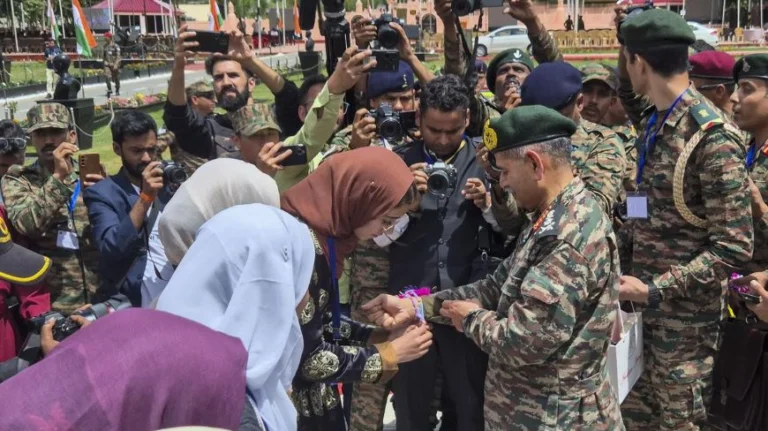
Context
On July 26, 2025, India commemorated the 26th anniversary of Kargil Vijay Diwas, marking its victory in the 1999 Kargil War. National leaders, including the President, Prime Minister, Defence Minister, and chiefs of the armed forces paid homage to the martyrs.
Background
The Kargil War (May–July 1999) was fought between India and Pakistan after Pakistani soldiers and militants infiltrated Indian territory in the Kargil sector of Jammu & Kashmir. The conflict ended on July 26 with India recapturing all the strategic heights.
Constitutional Provisions
- Article 53 & 74: Vest command of armed forces in the President, advised by the Council of Ministers.
- Article 355: Duty of the Union to protect states against external aggression.
- 7th Schedule (Union List): Defence is under the purview of the Union Government.
Legal Measures
- The Armed Forces Special Powers Act (AFSPA) empowers military operations in disturbed areas.
- War Injuries (Compensation Insurance) and other schemes ensure rehabilitation and recognition of martyrs.
Reasons behind the Conflict
- Strategic misadventure by Pakistan to cut off the Leh-Srinagar Highway.
- Exploitation of winter troop withdrawal on the Indian side.
- Attempt to internationalize the Kashmir issue post-nuclear tests (Pokhran-II and Chagai-I).
Definition of Technical Terms
- Operation Vijay: The Indian Army’s operation to reclaim the infiltrated territory in Kargil.
- Operation Safed Sagar: Indian Air Force’s code name for its Kargil operations.
- Line of Control (LoC): De facto border between Indian- and Pakistan-administered Kashmir.
Impact on the World
- Marked a rare limited war between two nuclear powers.
- Led to international diplomatic pressure on Pakistan.
- Elevated India’s global military credibility and reinforced its doctrine of strategic restraint.
Impact on Bilateral Relations
- Caused a major setback in Indo-Pak relations, especially after the Lahore Declaration.
- Led to India’s offensive defence posture, including surgical and air strikes post-2016 and 2019.
Challenges
- Sustained infiltration and proxy warfare.
- High-altitude warfare remains a logistical challenge.
- Political exploitation of martyrdom and conflict narratives.
Way Forward
- Enhance border surveillance technologies and intelligence coordination.
- Institutionalize civil-military synergy.
- Foster peace narratives alongside robust defence preparedness.
- Recognize martyr families with structured socio-economic support.
Prelims MCQ
Q. Consider the following statements about the Kargil War and Kargil Vijay Diwas:
- Operation Vijay involved all three branches of the Indian armed forces in a coordinated tri-service effort.
- Operation Safed Sagar was the first major Indian Air Force operation in Kashmir since 1971.
- The Kargil conflict occurred after India crossed the LoC to retaliate against Pakistani aggression.
Which of the above statements are correct?
A. 1 and 2 only
B. 2 and 3 only
C. 1 and 3 only
D. All three
Answer: A. 1 and 2 only
Explanation:
- Statement 1 is correct: Operation Vijay was led primarily by the Army, but had crucial support from the IAF and Navy in a coordinated manner, although not officially a tri-services war like future operations (e.g., Balakot).
- Statement 2 is correct: Operation Safed Sagar was indeed the first large-scale air operation by the IAF in Kashmir since 1971, limited to the Indian side of the LoC.
- Statement 3 is incorrect: India did not cross the LoC; in fact, this was a point of diplomatic and moral high ground for India.
Mains Question
Q. “Kargil Vijay Diwas is not only a military celebration but a reminder of strategic restraint and national unity.” Discuss regarding India’s evolving military doctrine and civil-military relations. (250 words)
One in three US Smartphone Imports Now Made in India

Context
India’s share in US smartphone imports surged to 36% in the first five months of 2025, up from just 11% in 2024, largely due to Apple shifting production to India. This comes amidst US-India trade negotiations and the threat of a 25% tariff by former US President Donald Trump on Indian-made iPhones.
Background
- China was traditionally the dominant supplier of smartphones to the US. However, geopolitical tensions, COVID-era supply disruptions, and cost dynamics have encouraged diversification of supply chains.
- Apple began producing in India in 2020 after the Indian government introduced the Production Linked Incentive (PLI) scheme.
- India exported 21.3 million smartphones to the US in Jan–May 2025, up threefold y-o-y, valued at $9.35 billion, surpassing its full 2024 figure.
Government Measures
- Production Linked Incentive (PLI) Scheme: Offers financial incentives to manufacturers for incremental output, especially in electronics.
- Ease of Doing Business reforms: Streamlined customs clearances, land allotments, and faster approvals.
- FDI policy liberalisation in the electronics sector: 100% FDI allowed under the automatic route.
- Skilling initiatives: Efforts to upskill workers in electronics manufacturing (e.g., PMKVY, Skill India).
Key Economic Reasons for India’s Rise
- Cost competitiveness: India offers lower wages and tax incentives.
- PLI Scheme support: Over $2.8 billion in FDI by PLI beneficiaries.
- Apple’s China+1 strategy: Move away from China due to political and supply chain risks.
- Labour abundance: India’s large semi-skilled workforce suits assembly-line manufacturing.
- Infrastructure development: Tamil Nadu and Karnataka emerged as key electronics hubs.
Significance
- Trade diversification: Reduces dependence on China for the US.
- India’s export boost: Smartphones are now India’s top export item to the US by value.
- Global supply chain integration: Enhances India’s position as an alternative manufacturing base.
- Employment generation: Mobile phone manufacturing units have increased from 2 in 2014-15 to 300 in 2024-25.
- FDI magnet: $1.49 billion investment by Foxconn in 2025 into Tamil Nadu unit.
Definitions of Technical Terms
- CIF (Cost, Insurance, Freight): The value of goods including cost, insurance, and freight up to the port of destination.
- PLI Scheme: A government initiative that offers incentives to companies for incremental sales from products manufactured in India.
- China+1 Strategy: A business strategy to avoid over-reliance on China by adding other manufacturing bases.
Impact on India and the World
India
- Boosts Make in India initiative.
- Strengthens diplomatic leverage in India-US trade relations.
- Enhances the R&D ecosystem gradually through tech transfer.
World
- Geopolitical supply chain shift from China to India.
- Increases competition among emerging economies like Vietnam and Mexico for electronics manufacturing.
- Alters global FDI flows in electronics.
Challenges
- Tariff threat: Trump’s proposed 25% tariff may disrupt Indian gains.
- Supplier base gap: Apple has 157 suppliers in China vs just 64 in India (2025).
- Skilling gap: Shortage of highly skilled labour in precision manufacturing.
- Policy unpredictability in the US.
Way Forward
- Negotiated trade agreement with the US to avoid punitive tariffs.
- Expand the supplier ecosystem: Offer incentives for component manufacturers to set up in India.
- Focus on value addition: Move beyond assembly to chip design, software integration.
- Sustain policy consistency: To attract long-term FDI.
- R&D investments to deepen India’s role beyond a low-cost hub.
Prelims MCQ
Q. Consider the following statements regarding smartphone manufacturing and trade between India and the US in 2025:
- India’s smartphone exports to the US have overtaken China’s in both volume and value.
- The Production Linked Incentive (PLI) scheme has been a key driver in shifting iPhone manufacturing to India.
- A proposed 25% tariff by the US could adversely affect India’s smartphone export trajectory.
Which of the above statements is/are correct?
A. 1 and 2 only
B. 2 and 3 only
C. 1 and 3 only
D. All of the above
Answer: B.
Explanation
- Statement 1 is incorrect: While India has increased its share to 36%, China remains the top exporter to the US by volume and value (29.4 million units worth $10 billion vs India’s 21.3 million units worth $9.35 billion in Jan-May 2025).
- Statement 2 is correct: The PLI scheme introduced by India in 2020 has been instrumental in attracting Apple’s contract manufacturers such as Foxconn and Pegatron.
- Statement 3 is correct: President Trump threatened a 25% tariff on Indian-made iPhones, which could reduce cost competitiveness and impact the trajectory of exports.
Hence, the correct answer is B. 2 and 3 only.
Mains Question
Q. The rapid shift of smartphone manufacturing from China to India marks a significant turning point in global supply chains. Critically examine the role of government policy, geo-economic factors, and corporate strategy in this transformation. Discuss its implications for India’s trade and industrial policy. (250 words)
India–Maldives Relations in Focus: PM Modi’s Visit to Maldives (2025)

Context
Prime Minister Narendra Modi’s recent two-day visit to the Maldives at the invitation of President Mohamed Muizzu coincided with the country’s 60th Independence Day and 60 years of diplomatic ties between India and the Maldives. This high-level engagement highlights India’s continued commitment to its ‘Neighbourhood First’ policy and seeks to recalibrate ties following strained relations post-2023.
Background
- Historical Ties: India was among the first nations to recognize the Maldives’ independence in 1965.
- Strategic Engagement: Bilateral relations deepened under PM Modi’s “Neighbourhood First” and SAGAR (Security and Growth for All in the Region) doctrines.
- Strains in Ties: President Muizzu, elected in 2023, had an ‘India Out’ rhetoric and sought closer relations with China, straining traditional defence and developmental cooperation.
Government Measures & Agreements (2025)
- Several MoUs signed in trade, agriculture, healthcare, and social welfare.
- India committed to continue infrastructure development including housing, water, and sanitation.
- Modi reaffirmed people-centric ties and India’s contribution to capacity-building and tourism infrastructure.
Reasons For Renewed Diplomatic Push
- Maldives’ geo-strategic location in the Indian Ocean sea lanes.
- Need to balance China’s growing footprint via BRI and infrastructure funding.
- Soft power projection through cultural diplomacy, training, and grant-in-aid.
Significance
- Strategic Depth: Maldives is key to maritime security and anti-piracy operations in the IOR.
- Geoeconomic Leverage: Indian infrastructure, trade credits, and tourism ensure India’s economic relevance.
- People-to-People Ties: Indian tourists are the highest contributors; also, medical and educational exchanges exist.
Definition of Terms
- Neighbourhood First Policy: India’s foreign policy focus on prioritising relations with immediate neighbours.
- SAGAR Doctrine: A strategic vision to ensure India’s role as a net security provider in the Indian Ocean.
- BRI (Belt and Road Initiative): China’s global infrastructure project often viewed with strategic undertones.
Impacts on India and the World
- India: Reinforces leadership in South Asia, safeguards security, counters Chinese debt diplomacy.
- World: Acts as a test case for balancing Chinese and democratic strategic influence in small island nations.
Challenges
- Trust deficit post ‘India Out’ campaign.
- Rising Maldivian debt to China—China accounts for over 40% of Maldives’ external debt.
- Internal political polarization in Male may affect bilateral initiatives.
- Security concern: Chinese surveillance via infrastructure, ports.
Chinese Influence
- Investments in the Malé-Hulhulé bridge, airport expansion, and housing under BRI.
- Possible naval dual-use infrastructure raises security concerns for India.
- Maldives is also part of China’s “String of Pearls” strategy encircling India.
Economic Nuance
India’s investment in the Maldives—via LoCs (Lines of Credit), grants, and project finance—is aimed at providing an alternative to high-interest Chinese loans. Tourism and health tourism are major economic linkages. PM Modi’s visit signals a revival of goodwill, critical to India’s regional soft power and trade corridor interests.
Way Forward
- Trust Rebuilding: Transparent development assistance without infringing sovereignty.
- People-Centric Projects: Focus on housing, health, education, and disaster relief.
- Defence Cooperation: Restore High-Impact Community Development Projects (HICDP) and training programs.
- Multilateral Leverage: Engage Maldives via Indian Ocean Rim Association (IORA) and Colombo Security Conclave.
Prelims MCQ
Q. Consider the following statements regarding India–Maldives Relations:
- Maldives is a member of the Colombo Security Conclave and the Belt and Road Initiative.
- India is the largest source of tourists to the Maldives.
- Maldives gained independence from the United Kingdom in 1972.
Which of the above statements is/are correct?
(a) 1 and 2 only
(b) 2 only
(c) 1 and 3 only
(d) 1, 2 and 3
Answer: (a) 1 and 2 only
Explanation:
- Statement 1 is correct: Maldives is part of the Colombo Security Conclave (CSC), a regional maritime security grouping with India, Sri Lanka, and Mauritius. It is also a participant in China’s Belt and Road Initiative.
- Statement 2 is correct: India is the largest source of tourists to the Maldives, especially post-COVID, contributing to its services-driven GDP.
- Statement 3 is incorrect: Maldives gained independence from the United Kingdom on July 26, 1965—not in 1972.
Mains Question
Q. “India–Maldives relations represent a microcosm of India’s geopolitical challenges and opportunities in the Indian Ocean Region.” Analyse in the context of recent political transitions and strategic competition in South Asia. (250 words)



